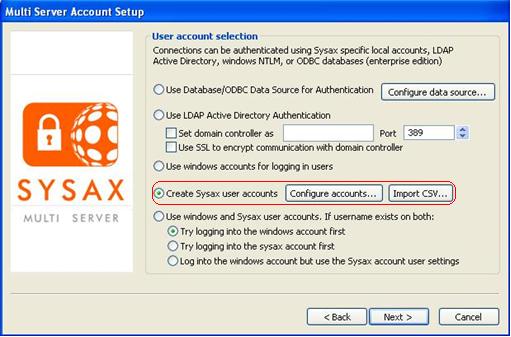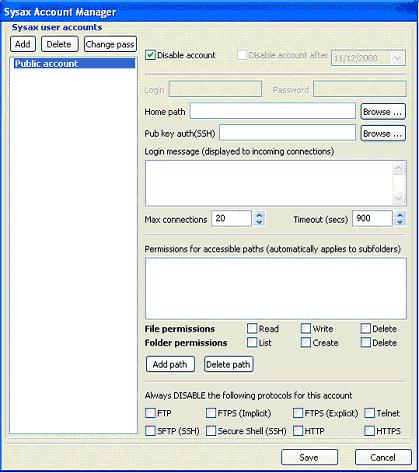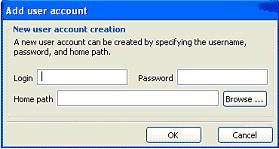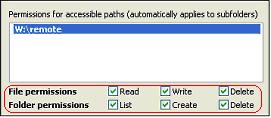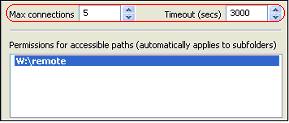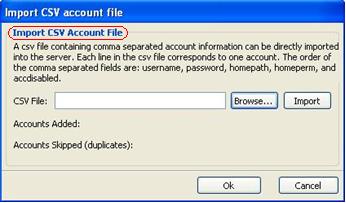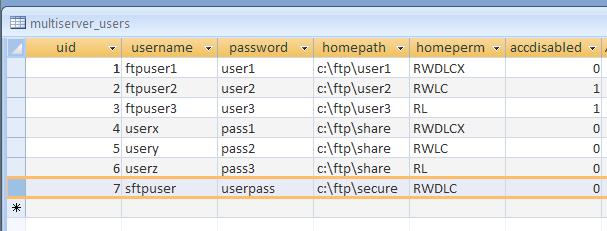
| << back to sysax.com Product page |
Sysax server specific user accounts can be created to enable account management directly through the Sysax server administration panel or through the web based administration interface.
Clicking on the Configure accounts button opens the Sysax account manager window where user accounts can be created, deleted, or modified.
For each account listed in the field under Permissions for accessible paths, check the appropriate file permissions(read/write/delete) and folder permissions(list/create/delete).
You can also use the Add path and Delete path buttons to add or delete the highlighted paths.
After granting the account permissions, the next step is to disable specific protocols for each account. To disable the specific protocols, check the appropriate protocols in this field.
If the Sysax Multi Server does not respond or does not finish a response in a timely manner after the client sends a command, the server times out and disconnects.
To reset the timeout specification, enter the appropriate seconds in the field to the right of Timeout(secs). You can also use the Up and Down arrows to select a number.
Also, clicking on the Import CSV... button opens the Import CSV account file window where a CSV file containing comma separated account information can be directly imported into the server.
Each line in the CSV file corresponds to one account. The order of the comma separated fields are: username, password, homepath, homeperm and accdisabled. The example of CSV file is shown in below.
In this,
- The username field is the username for the account and must be unique.
- The password field is the password for the account.
- The homepath field is the home path for the account.
- The homeperm field shows the permissions for the home path and all sub folders.
For the permissions field,
R = file read
W = file write
D = file delete
L = folder list
C = folder create
X = folder delete
The accdisabled field shows if the account is disabled. An account is disabled if this field is set to 1.
